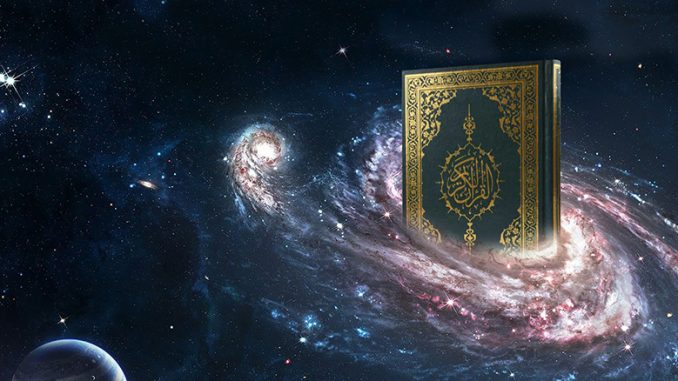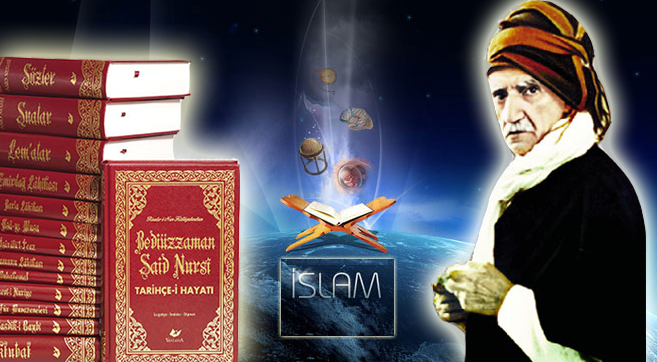Religion is composed of the mavera — the transcendental realm in which the Creator’s names and attributes are manifested.
Mustafa Eren Bozoklu
[email protected]
Divine knowledge, will, and power have brought nature into existence, along with the worlds that lie both above and beneath it, and continue to sustain them. What we call meaning is the very divine purpose — the will of God that flows from the Imam al-Mubin and the Kitab al-Mubin, through the system of nature, the seven heavens, Paradise and Hell, reaching all the way to the Sidrat al-Muntaha. It moves through these layered and interwoven realms as a sacred current of divine electricity, energizing the minds of all rational beings.
We can speak of the limits of the major approaches and disciplines that have sought to understand the universe — philosophy, science, Sufism, and Kalam. The realm we call nature has especially been the focus of philosophers, scientists, and scholars of kalam. In theory, quantum mechanics has uncovered a form believed to lie at the very foundation of existence — the underlying layer of nature itself. Quantum mechanics aims to uncover a fundamental element — a structure thought to form the very fabric of nature itself. It is described as a chaotic field of energy where the familiar laws of mathematics and physics cease to function. It is as if energy, by some unknown cause or command, begins to move toward order — thickening, gaining density, and solidifying — until it becomes visible and manifests as what we call nature. For philosophy, this manifestation is understood as the “chain of causal motion.” At this point, however, the scholars of Kalam go beyond the philosophers: guided also by revelation, they seek to trace this chain of causes back to a Creator, the ultimate source of all existence.

Sufism gives two kinds of responses to the arena of debate that belong to philosophy, science, and Kalam.
The first is the path of Wahdat al-Wujūd (the Unity of Being), which filters existence through the alembic of pure understanding, declaring that “there is no existent but He.” It sees being and existence as lower than imagination itself — mere shadows or mental representations without true substance. This school ultimately claims that nothing exists but meaning itself; that all existents, in relation to God, are as nothing.
The second path, Wahdat al-Shuhūd (the Unity of Witnessing), seeks complete inner presence by drawing a veil over existence. It turns away from whatever God has created or inscribed with meaning. Both Wahdat al-Wujūd and Wahdat al-Shuhūd strive, as it were, to ascend from the realm of creation (nature) to the realm of power — the quantum realm of energy that, for now, remains only theoretically described.
This ascent, in the end, leads to sekr (spiritual intoxication) or istighrāq (absorption in the Divine Being). Yet both sekr and istighrāq are not intellectual but experiential states — they cannot be truly expressed in words.
There exists a group of philosophers who find the explanations of philosophy — explanations that overlook meaning — profoundly insufficient. These are the Sophists, the so-called safsatacılar, who, seeing philosophy’s failure either to affirm or to deny a Creator, chose instead to reject existence altogether. The Sophists took their place in history as an anarchic school of thought — one that rebelled against philosophy’s inability to generate meaning.
Religion does not confine existence to the tree of nature that rises from the soil of the quantum world. It speaks also of countless realms of divine power — realms where cause and effect are created together — such as the seven heavens, Paradise, and Hell. All the way to the Sidrat al-Muntahā, it declares that within every world there lies another world, within every being another being, each one a manifestation of God’s names and attributes.

The sphere of science and philosophy covers only a small portion of the vast realms that religion points toward. Thus, for a Muslim, to think, to reflect, and to reason (tafakkur and ‘aql) is something profoundly different from doing philosophy or engaging in science. The Creator opens a path in everything that leads back to Himself — this is the argument from providence (dalīl al-‘ināyah). And He displays His artistry and creative acts within all things — this is the argument from invention (dalīl al-ikhtirā‘). Through these, He neither abandons existence to meaninglessness nor leaves the meaning embedded within existence without returning it to its true Owner — this is what may be called the Muslim’s philosophy. It follows, then, that for a Muslim, grasping the essence of science and philosophy is far easier — and indeed inevitable — whereas for the scientist who examines only the processes of becoming, or the philosopher who merely describes them (the philosopher’s Muslim), attaining the essence of religion is far more arduous and demanding.
When one attempts to understand and explain religion merely through the use of scientific data — without transcending the chain of cause and effect, and by following philosophy’s method, which confines itself to circular reasoning — the spirituality of religion, its divine causes and wisdoms, the Names of the Lord, and ultimately His inner acts (shu’unāt) can only be conveyed in a highly limited way. Through this approach — by becoming, so to speak, a Muslim of Philosophy (and of Science) — transcending the wall of nature and causation becomes an exceedingly difficult endeavor.
On the other hand, it is evident that those who concern themselves only with explaining the logical cycle of the system, ignoring the meaning of what unfolds, and thus pushing the Creator into utter marginality, inevitably deprive themselves of the treasures of faith.

The Philosophy of the Muslim is, in essence, an endeavor toward ma‘rifatullah—a pursuit of knowing God. It approaches the universe through the lens of meaning, perceiving things not in and for themselves (ma‘nā-yi ismī), but as signs pointing to their Creator (ma‘nā-yi ḥarfī). Therefore, it is pure and authentic in nature, capable of transcending the boundaries of science and the physical world with ease. From the smallest particle to the sun itself, it seeks the traces and essence of the Creator in everything, and in doing so, it discovers the joy of truth and the delight of existence.
The “Muslim of Philosophy” is, in essence, the outcome of an identity crisis; In the name of objectivity, he excludes the most human, exalted, and spiritual aspects of the self—thereby setting aside, with his own hand, the wisdom of being a true believer. By dismissing revelation—or by reducing it to the level of a mere text—he finds himself yielding to the pressure of materialism. And even when he accepts revelation, he feels compelled to translate it into a proposition that philosophy can examine or verify. Yet this stance is no better than rejecting revelation outright. When revelation is detached from the One who revealed it, it loses its divine source and becomes something merely human. Treating revelation as if it were only the work of a philosopher or a thinker reduces it to a historical text—temporary, limited, and bound by time. In that case, revelation is no longer an eternal message guiding humankind, but just another piece of writing born from human imagination.

Philosophy is a way of using reason; yet reason itself does not have to follow a purely philosophical path—nor must it be materialistic. A Muslim of philosophy must set out on a long journey to move beyond the limits of natural laws, the veil of causes, and the chaos of randomness. If, after all these challenges, they reach the idea of a Creator, that Creator will appear not as He defines Himself, but as the philosopher imagines Him to be. So far, the Muslim of philosophy has reached the concept of a Creator known as the “Necessary Being” (Wājib al-Wujūd); yet to truly understand the nature and essence of that Being, one must wait until the Creator Himself reveals and describes who He is.